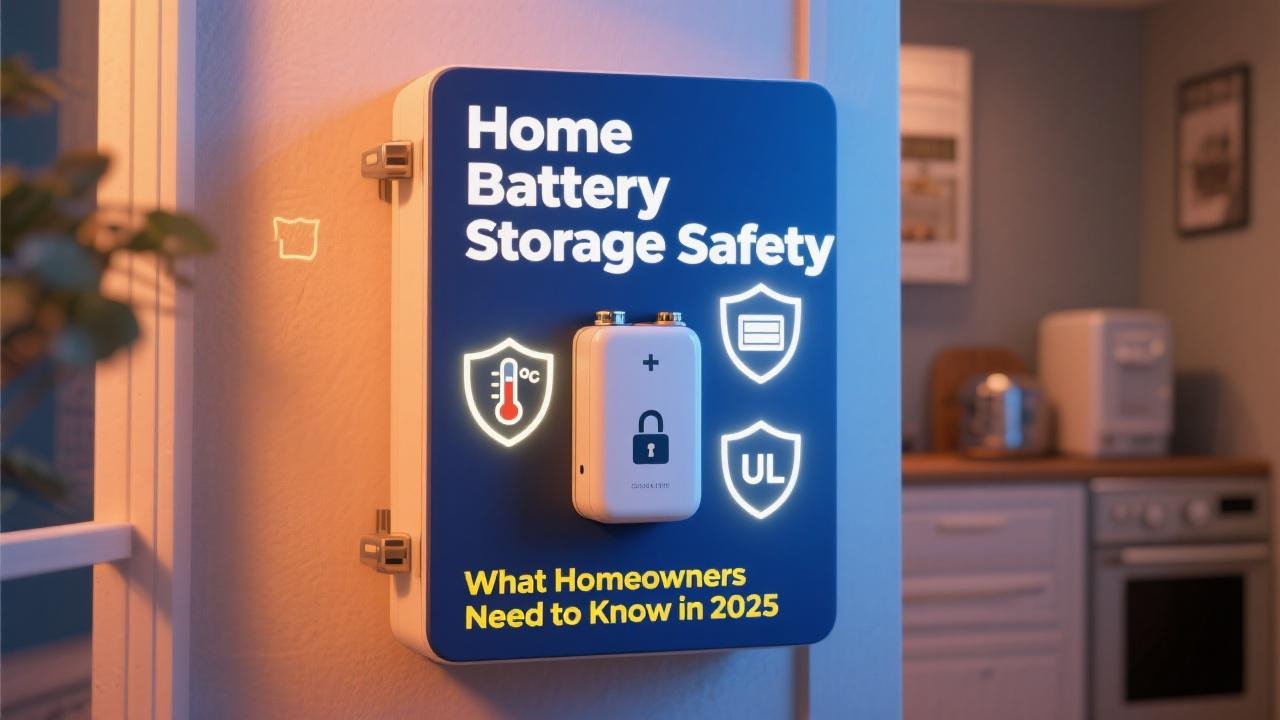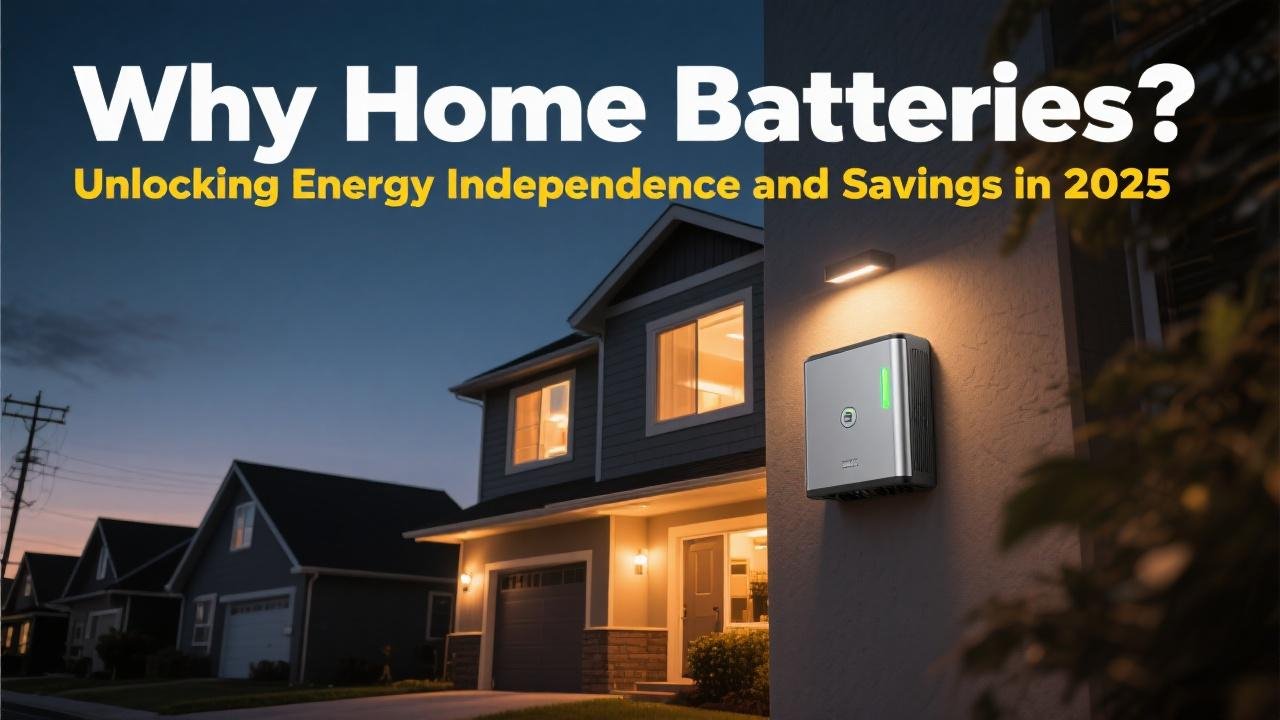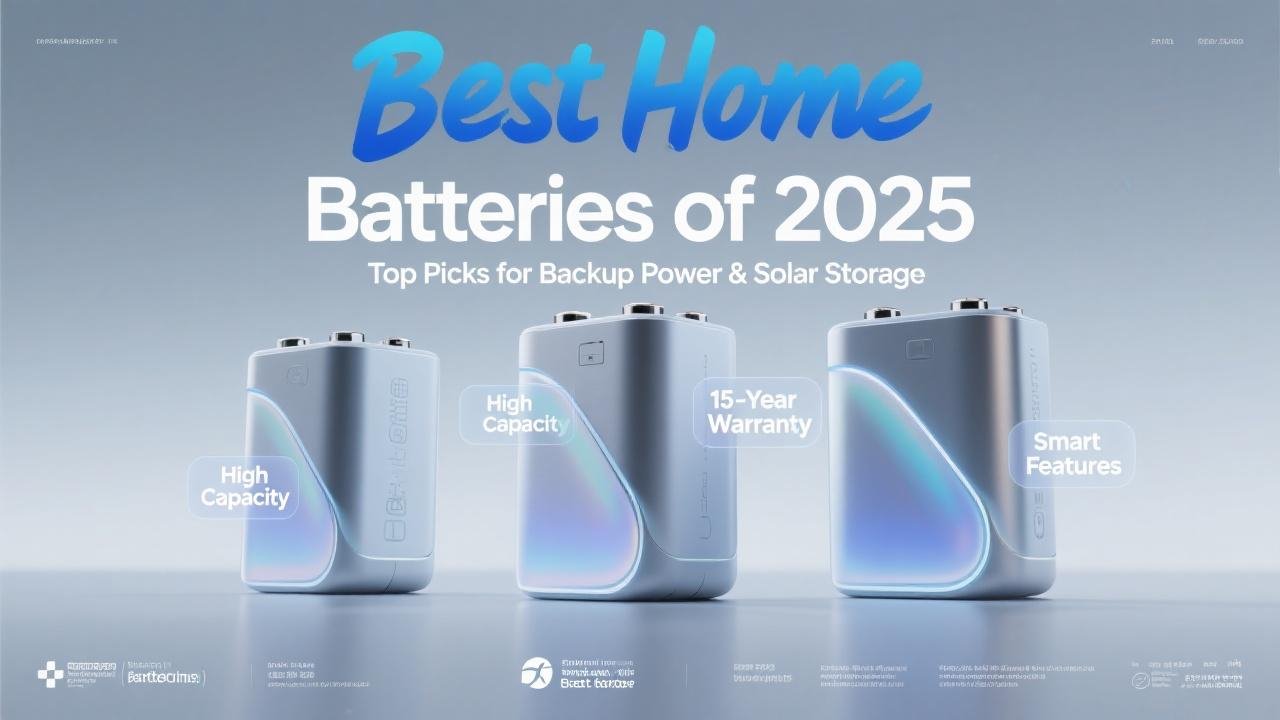Introduction: Powering Your Home Safely with Advanced Battery Technology
Home battery storage systems are rapidly becoming a popular addition to residential solar installations, offering energy independence and backup power. As with any energy system, safety is a paramount concern for homeowners. The good news is that modern home batteries in 2025 are designed with multiple layers of safety features, adhere to stringent industry standards, and utilize advanced chemistries to ensure reliable and secure operation in your home.
This guide will address common safety considerations for home battery storage, discuss the technologies that keep them safe, and highlight the importance of professional installation. Understanding these aspects can provide peace of mind when considering systems like the Enphase IQ Battery 5P (known for its LFP chemistry and safety standards ) or the Tesla Powerwall.
Understanding Battery Chemistries and Safety: LFP vs. NMC
The chemistry inside a lithium-ion battery plays a significant role in its safety profile. The two most common types in 2025 home storage are:
- Lithium Iron Phosphate (LFP – LiFePO₄):
- Safety Profile: LFP is widely regarded as one of the safest lithium-ion chemistries due to its excellent thermal stability. It is far less prone to “thermal runaway” (a chain reaction of overheating that can lead to fire) compared to other chemistries. LFP batteries can tolerate higher temperatures and are less likely to combust if punctured or overcharged.
- Usage: Increasingly the preferred chemistry for residential applications where safety is a top priority. Many leading brands are shifting towards or already using LFP. The Enphase IQ Battery 5P, for example, utilizes LFP chemistry and is evaluated to UL 9540A, a key safety standard for thermal runaway fire propagation.
- Nickel Manganese Cobalt (NMC – LiNiMnCoO₂):
- Safety Profile: NMC offers higher energy density (more energy in a smaller space) but has a lower thermal runaway threshold than LFP. While NMC batteries are used safely in many applications (including many EVs and some home batteries like earlier Tesla Powerwall models), they require more sophisticated Battery Management Systems (BMS) and thermal management to ensure safety.
- Usage: Still used in some home battery systems, particularly where very high energy density is prioritized.
In 2025, the trend is towards LFP for home storage due to its inherent safety advantages.
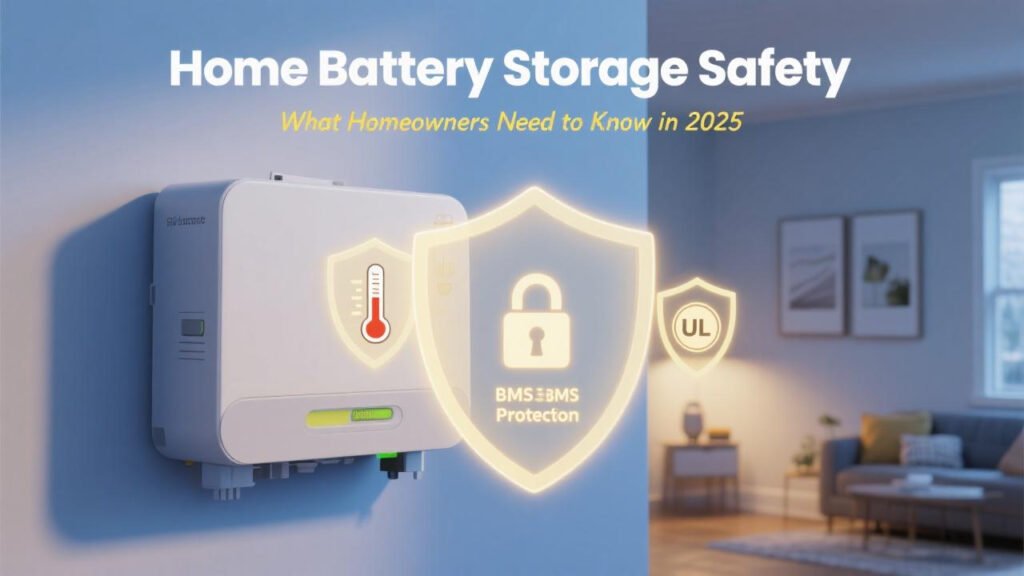
Key Safety Features in Modern Home Batteries:
Manufacturers incorporate multiple safety mechanisms into their battery systems:
Battery Management System (BMS): This is the “brain” of the battery. The BMS continuously monitors:
- Cell Temperatures: Prevents overheating by managing charge/discharge rates or shutting down if necessary.
- Cell Voltages: Protects against overcharging and over-discharging, which can damage cells and create safety risks.
- Current: Manages the flow of electricity to prevent overcurrent situations.
- Cell Balancing: Ensures all cells within the battery pack charge and discharge evenly, improving performance and longevity, and preventing stress on individual cells.
The SOLIX X1, for example, includes comprehensive safety systems like anti-isolation protection, over-current and voltage protection, and temperature protection.
Thermal Management:
- Batteries generate some heat during operation. Effective thermal management systems (which can include liquid cooling, air cooling, or heat sinks) dissipate this heat to keep the battery within its optimal and safe operating temperature range. The Tesla Powerwall 3, for instance, is designed to operate reliably across a range of temperatures, though performance may decrease above 40°C (104°F) while maintaining safe operation.
Physical Enclosure and Protection:
- Home batteries are housed in robust enclosures designed to protect the internal components from physical damage, dust, and moisture (indicated by NEMA ratings like NEMA 3R for outdoor use ).
- Some enclosures are designed to contain potential issues, should they arise, minimizing external impact.
Fuses and Circuit Breakers:
- Multiple layers of overcurrent protection, including fuses and circuit breakers, are integrated into the system to prevent electrical faults from escalating.
Certifications and Safety Standards:
- Reputable home batteries are tested and certified to meet stringent national and international safety standards. Key standards include:
- UL 9540: Standard for Energy Storage Systems and Equipment. This is a comprehensive safety standard covering the battery system, inverter, and control software.
- UL 1973: Standard for Batteries for Use in Stationary, Vehicle Auxiliary Power and Light Electric Rail (LER) Applications.
- UL 9540A: Test Method for Evaluating Thermal Runaway Fire Propagation in Battery Energy Storage Systems. This is a critical test that assesses how a battery system behaves if a single cell experiences thermal runaway, aiming to prevent it from spreading to other cells or outside the unit.
- Always choose a battery system that is certified to these recognized standards. Installers found through EnergySage typically offer equipment that meets these certifications.
- Reputable home batteries are tested and certified to meet stringent national and international safety standards. Key standards include:
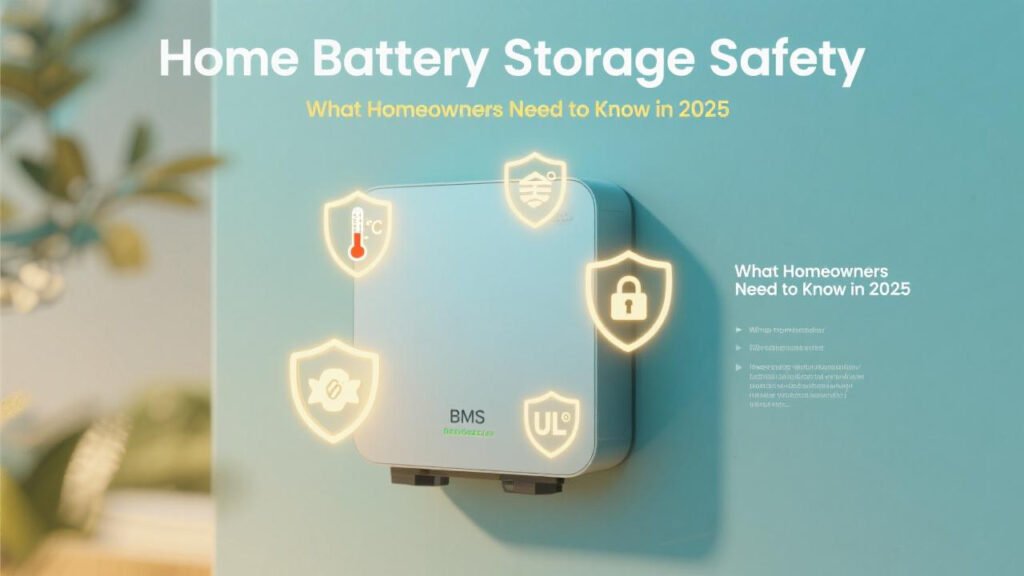
The Critical Role of Professional Installation:
Even the safest battery can become a hazard if installed incorrectly. Professional installation by certified and experienced electricians and technicians is non-negotiable.
- Code Compliance: Installers ensure the system is installed according to all local electrical codes, building codes, and fire codes. This includes proper wiring, grounding, clearances, and placement.
- Correct Configuration: They will correctly configure the BMS, inverter settings, and connections to your solar PV system and home electrical panel.
- Avoiding Hazards: Improper wiring or connections can lead to short circuits, overheating, and fire risks. Professionals are trained to avoid these pitfalls.
- Manufacturer Requirements: Installers follow the specific installation guidelines provided by the battery manufacturer, which is often a condition for warranty validity.
Attempting a DIY battery installation is highly discouraged due to the high voltages involved and the complexity of ensuring a safe and compliant setup.
Homeowner Best Practices for Battery Safety:
Once your battery is professionally installed:
- Follow Manufacturer Guidelines: Read and adhere to the operating and maintenance instructions provided by the manufacturer.
- Ensure Clearances: Keep the area around the battery unit clear of flammable materials and ensure adequate ventilation as specified.
- Regular Visual Checks: Periodically look for any signs of damage, leaks (rare), or unusual noises. If you notice anything concerning, contact your installer.
- Heed Warnings: Pay attention to any warnings or alerts from your battery’s monitoring system and contact your installer if issues arise.
- Avoid Physical Damage: Protect the battery unit from physical impact.
Powering Your Home with Confidence in 2025
Home battery storage technology has advanced significantly, with a strong emphasis on safety. Modern systems in 2025, particularly those utilizing LFP chemistry and certified to rigorous standards like UL 9540A, are designed with multiple layers of protection. When combined with professional installation by qualified experts, homeowners can confidently integrate battery storage into their homes.
While no energy system is entirely without risk, the safety measures built into today’s home batteries and the expertise of certified installers minimize these risks effectively. When researching options, ask about the battery chemistry, safety certifications, and the installer’s experience. Platforms like EnergySage can connect you with vetted installers who prioritize safety and use high-quality, certified equipment, allowing you to enjoy the benefits of energy storage with peace of mind.

